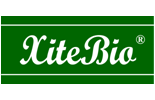Harvest is wrapping up across the country, with crops in many provinces looking good. Of course, we all want the highest yielding crop possible, but what effects do high yields have on your soil fertility? And how can you work to manage and replace the nutrients lost from a high-yielding crop? In this week’s edition of Growing Possibilities, we will discuss the effects of a high yields on soil nutrients and how you can get them back in your field for next season.
It makes sense that a higher yielding crop will take more nutrients out of the soil, but what can you expect from certain crops when it comes to nutrient uptake and removal? Uptake refers to nutrients contained in the crop which the crop has taken from the soil. Removal refers to the nutrients contained in the harvested portion of the crop. Nutrients in the portion of the crop that is not harvested can be partially returned to the soil after harvest, but those present in the harvested portion would obviously be gone for good.
For example, when soybean yields increase from 55 to 75 bu/ac, an additional 15 lb of phosphorous (P) and 25 lb of potassium (K) are taken with the harvest. Corn follows a similar example, where increasing your yield from 180 bu/ac to 250 bu/ac, removes an additional 24 lbs of P and 18 lb of K (1). Knowing the uptake and removal rates of your crops tells you about how your crop inputs are used during the season. This information is kind of essential for planning your fertilizer inputs for next season. The following table lists some nutrient uptake & removal rates typical of crops in Manitoba at certain yields and should give you an idea of what to expect from your own crops.

Fertilizers are not the only course of action for ensuring your soil fertility is where it needs to be. Utilizing biological crop inputs can also help your soil retain nutrients for next season’s crop and can unlock nutrients already in your soil, reducing your money spent on fertilizers next year. Rhizobial inoculants (e.g., XiteBio® SoyRhizo and XiteBio® PulseRhizo®) form nodules in the roots of your legume crops and use nitrogen (N)-fixing bacteria to take N right out of the air for plants to use. This reduces the use of soil N and can make the need for starter N irrelevant in crops with good nodulation (2).
Plant Growth Promoting Rhizobacteria (PGPR) based biologicals such as XiteBio® Yield+ add value to your soil by unlocking fixed phosphates that would otherwise be unavailable to your plants. More than 50% of applied P fertilizers get bound by soil particles, creating phosphate compounds or deposits that plants cannot use (3). Phosphate solubilizing PGPR (e.g., XiteBio® Yield+) break these bonds and make soil-bound P available for plant uptake. This not only increases the efficiency of your applied fertilizers it also creates more plant available P from the natural phosphate reserves present in the soil. Because P is one of the most expensive inputs (plus we only have finite reserves of it) you use on your crops, making sure you don’t apply more then you have to, can improve your bottom line.
As you can see, managing soil nutrient removal after a successful crop is just as important as harvesting it in the first place. Don’t let next year’s yields be held back by lack of nutrients!
References:
1) https://www.realagriculture.com/2020/10/soil-school-how-big-crop-yields-impact-soil-nutrients/
2) https://canadianagronomist.ca/nitrogen-management-options-for-saskatchewan-soybeans/
3) The Efficient Use of Phosphorus in Agricultural Soils, The Fertilizer Association of Ireland in association with Teagasc, Technical Bulletin Series – No. 4, February 2019


